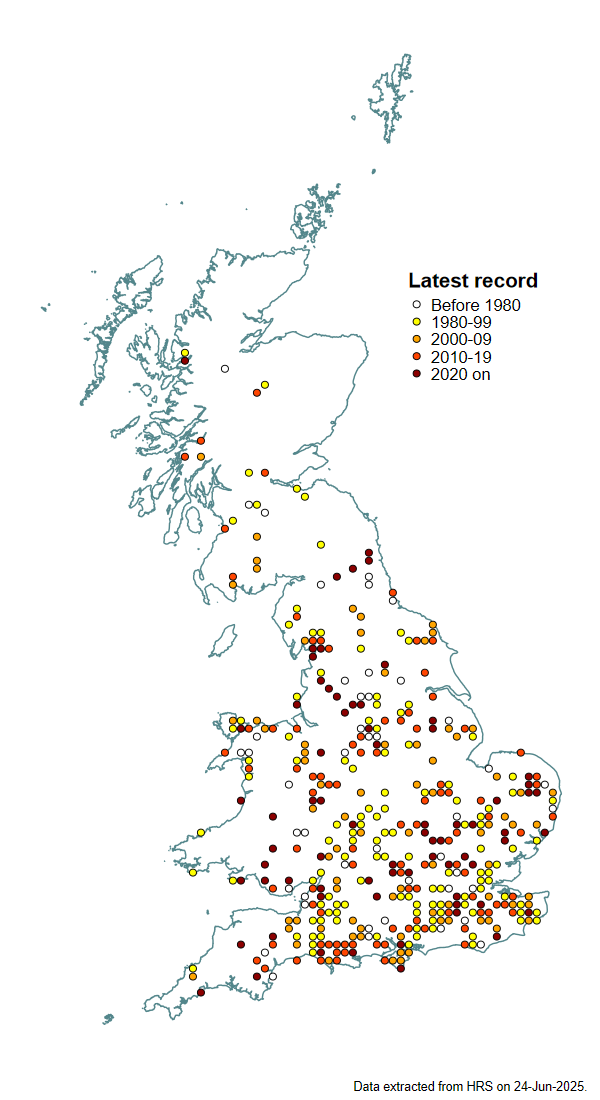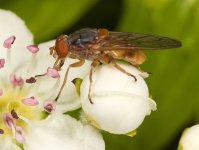Brachyopa scutellaris Robineau-Desvoidy, 1843
Identification
Identification difficulty = 3. ![]()
![]() according to Ball & Morris, 20241
according to Ball & Morris, 20241
Synonymy
Prior to 1939 the only listed British species was B. bicolor. The additional species were not covered by a widely available key until Coe(1953)2. Consequently, records prior to 1953 must be based on verifiable specimens.
Biology
The larva occurs in sap runs or accumulations of sap under bark near the base of trees, including Ash Fraxinus excelsior, Aspen Populus tremula, Yew Taxus baccata and Elm Ulmus sp. Adults are most often found flying around sun-lit bases of trees and can sometimes occur in considerable numbers. It seems as though this species has a relatively short emergence period.
Flight period
The following plots show the number of unique records per week excluding those reported to be of immature stages.

Distribution
A very widespread species that is primarily found in lowland woodlands. It occurs widely throughout England and Wales and more sporadically in Scotland.

Trends
The following plots show the Frescalo TFactor vs year and a map of the rescaled frequency (all records) for the species.
